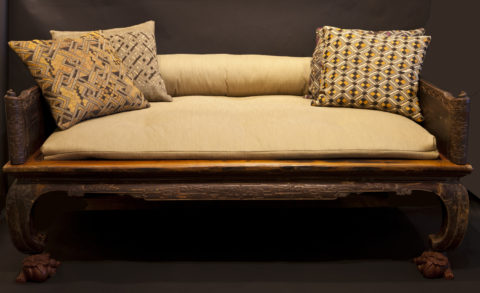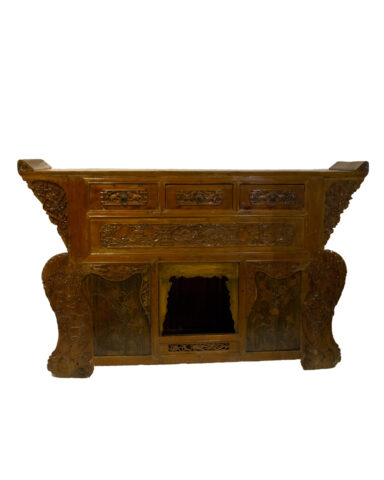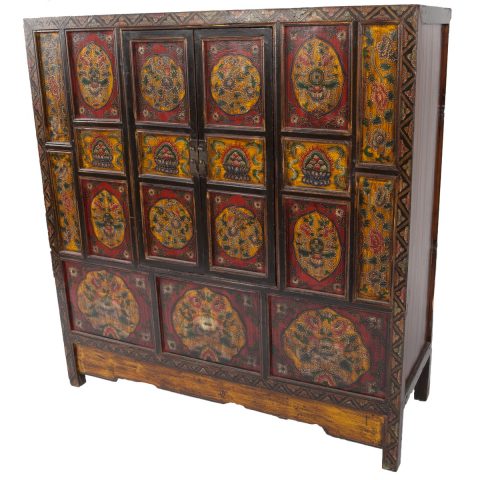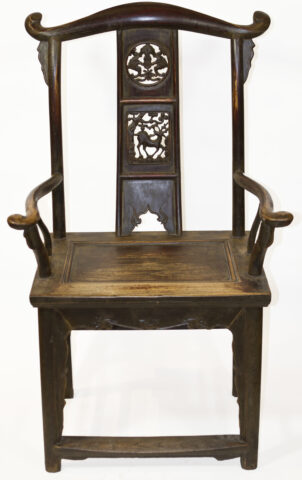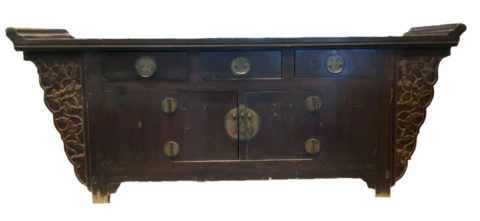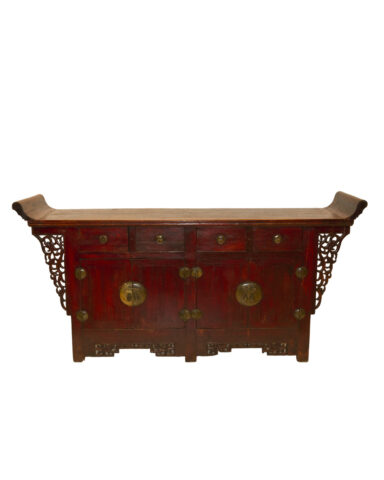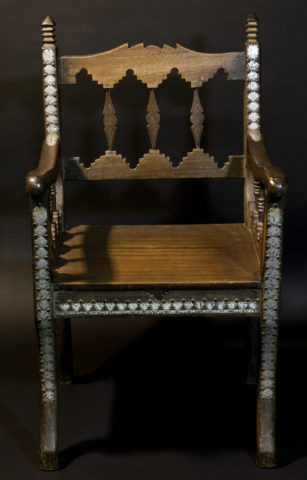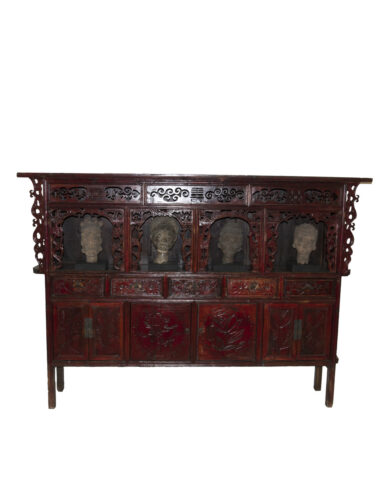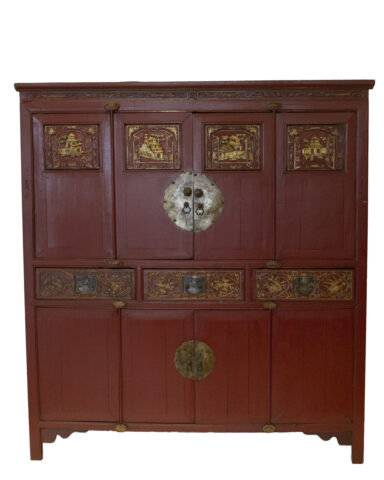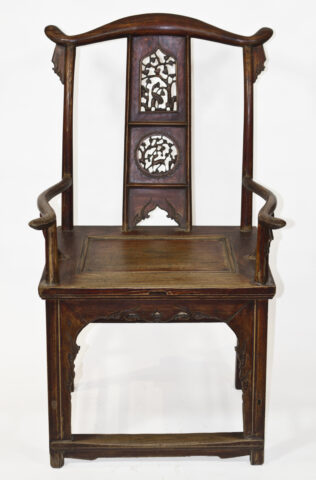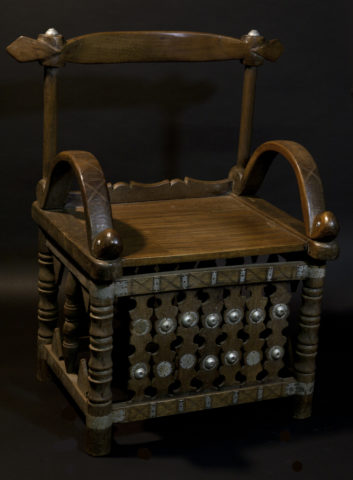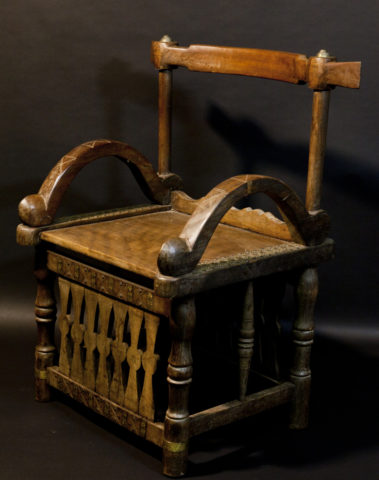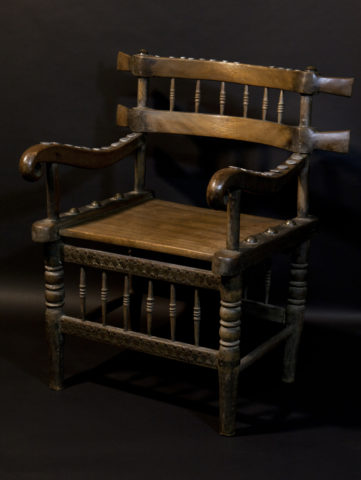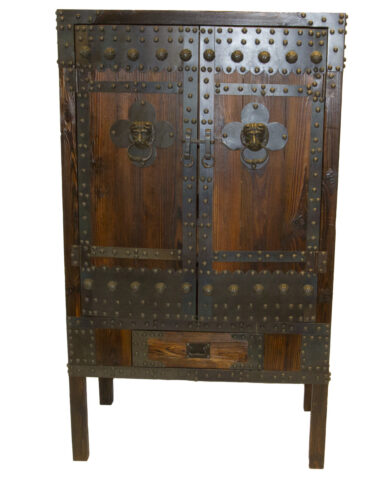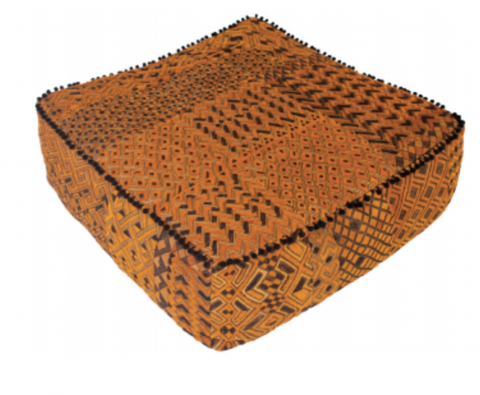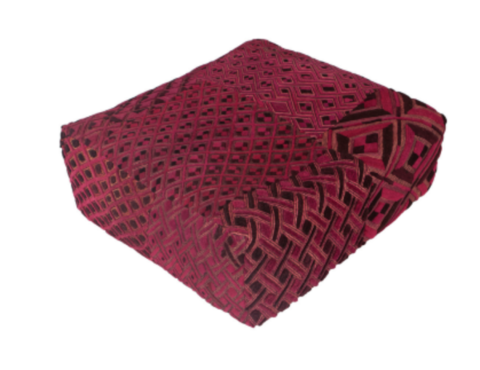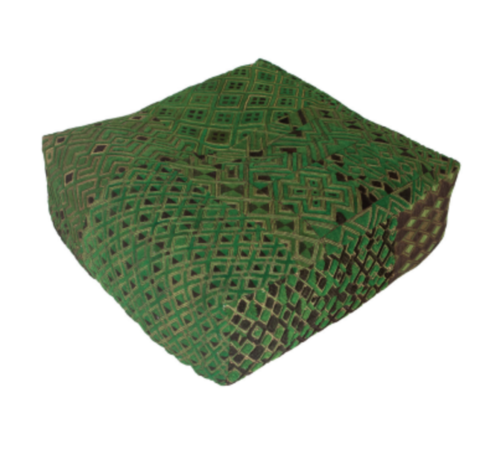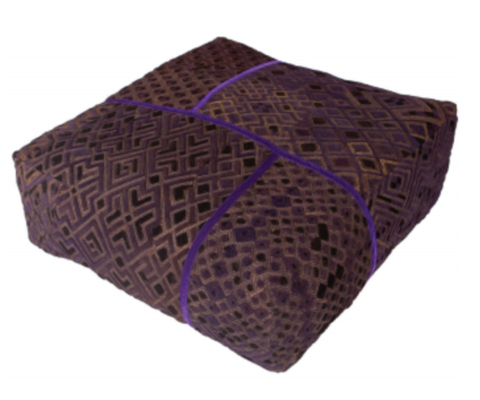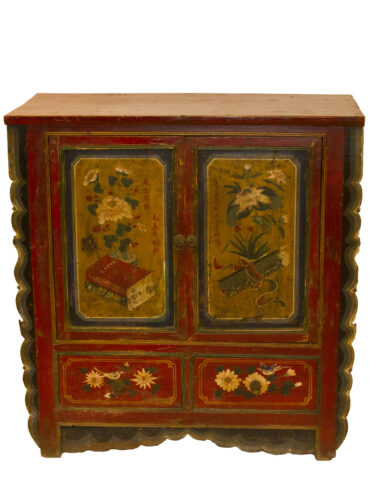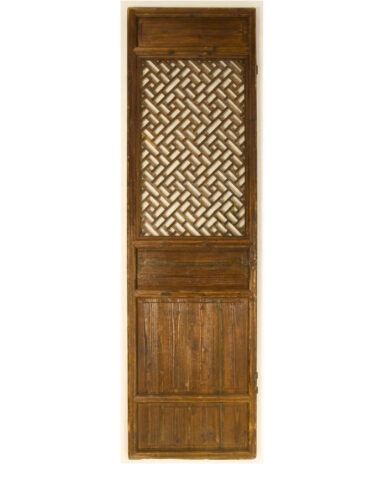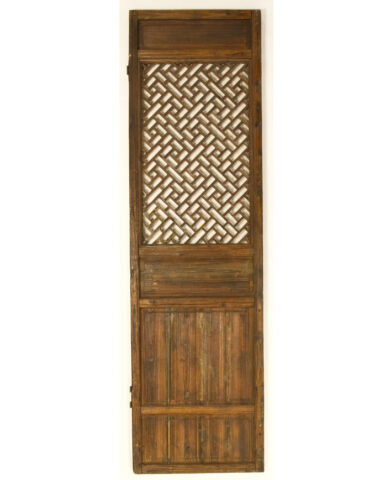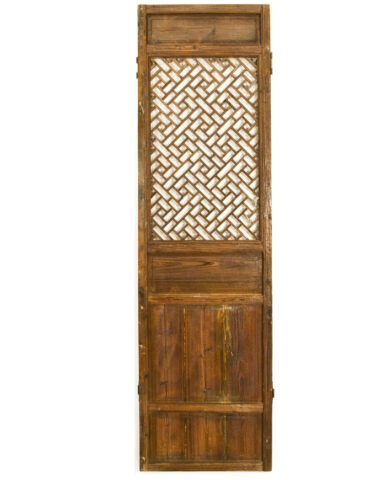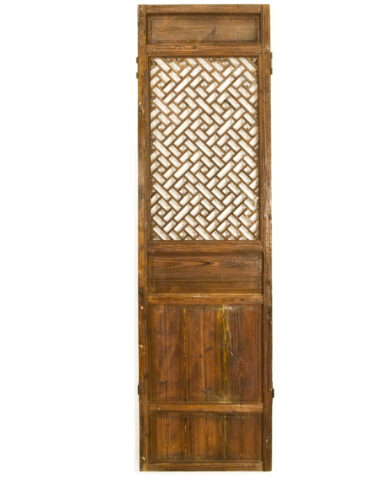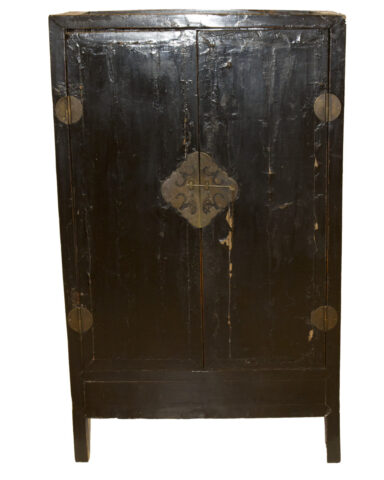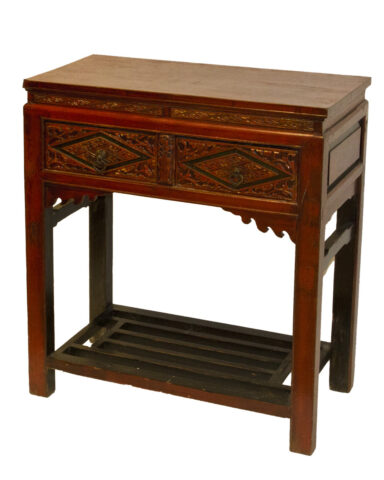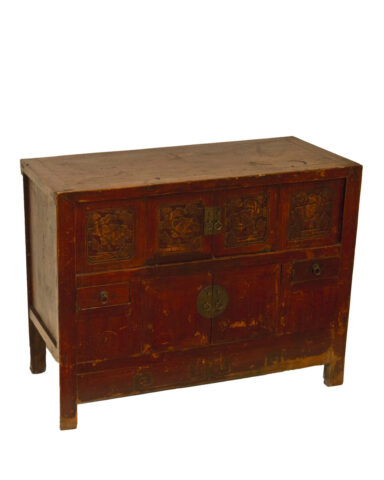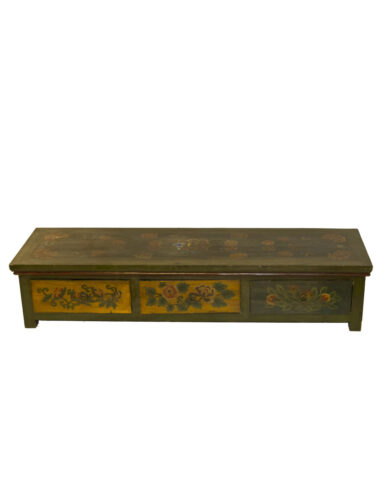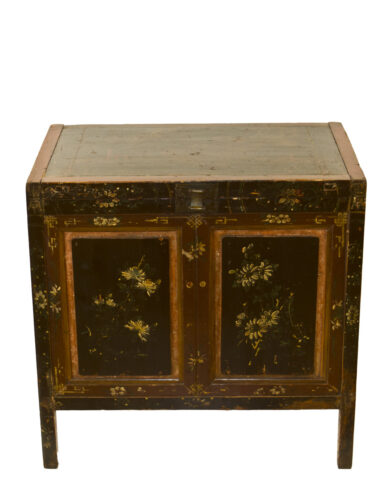Description
This piece is designed and constructed in the Shanxi Province of the People’s Republic of China. Long, elegant tables, often with inverted flanges (qiaotou’an), were traditionally used for entertaining and ceremonial gatherings within a temple or main ancestral hall, and sometimes placed near a bed or smaller table. Inverted flanges on tables as this draw attention to the eye and are perceived as cultural symbols of status. Some scholars of Chinese art argue that this upward-ended detail earned its place in religious dwellings. Others maintain the design is borrowed from early, Han period architecture – as illustrated by its sculpted roof corners. On this long, narrow table, the inverted flanges have scalloped edges, creating a more dramatic appearance. Beneath the paneled top, the apron-headed spandrel is carved with a traditional, step down, geometric motif. The front leg molding is unusual, as most tables of this kind have either round or squared legs with fewer details.


